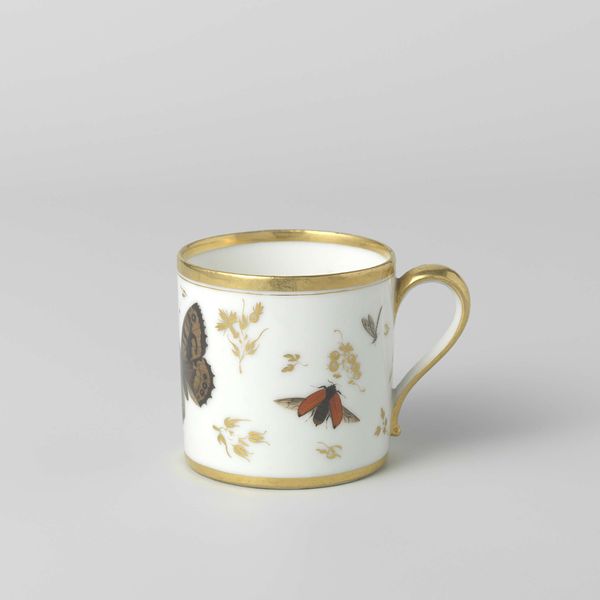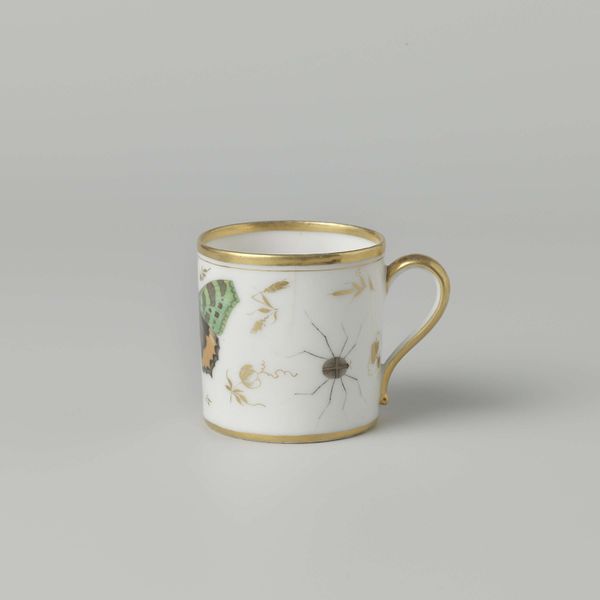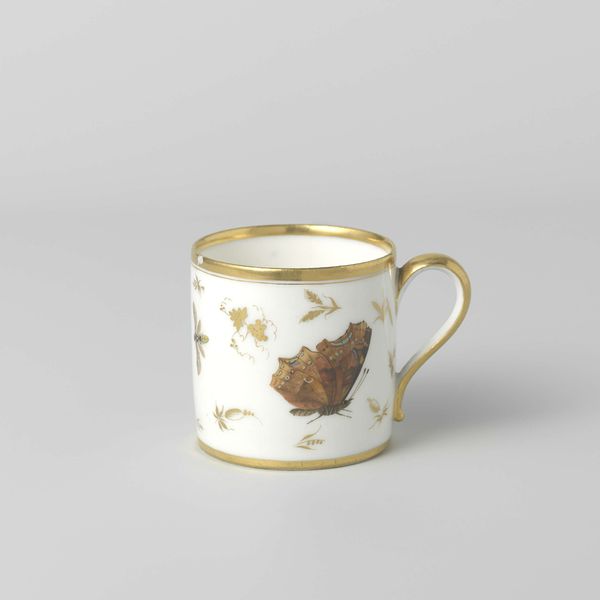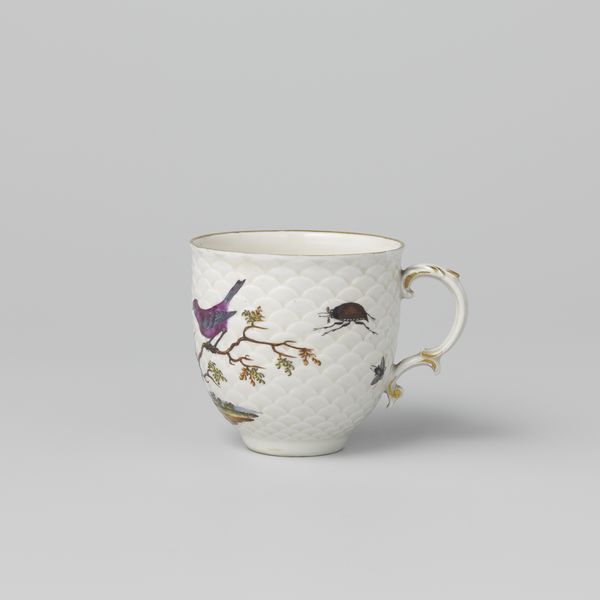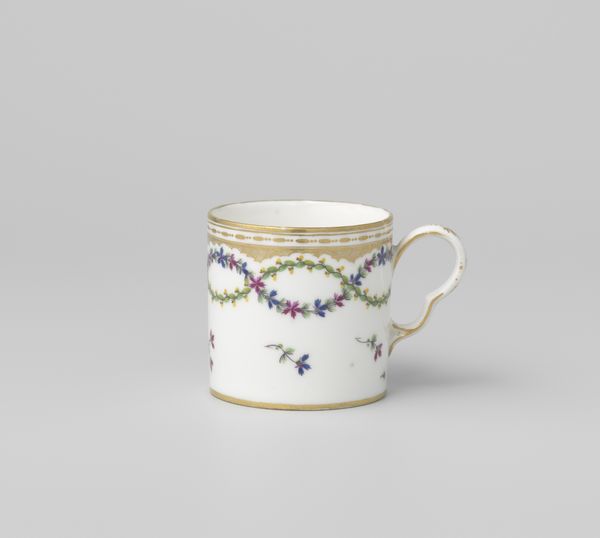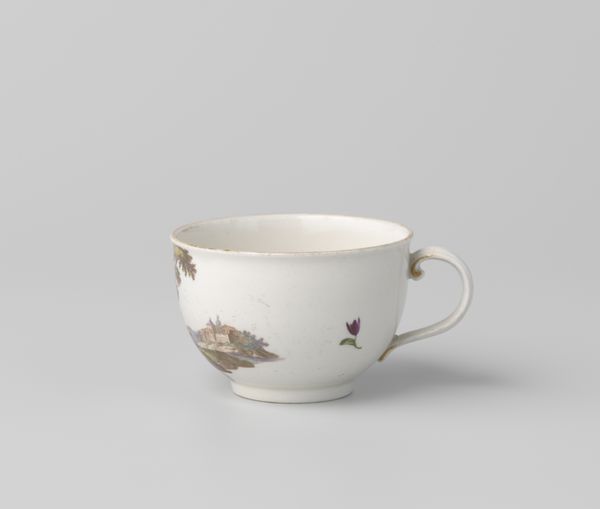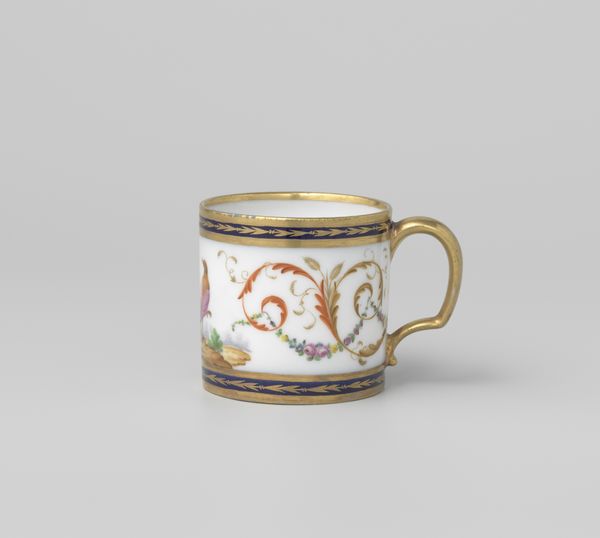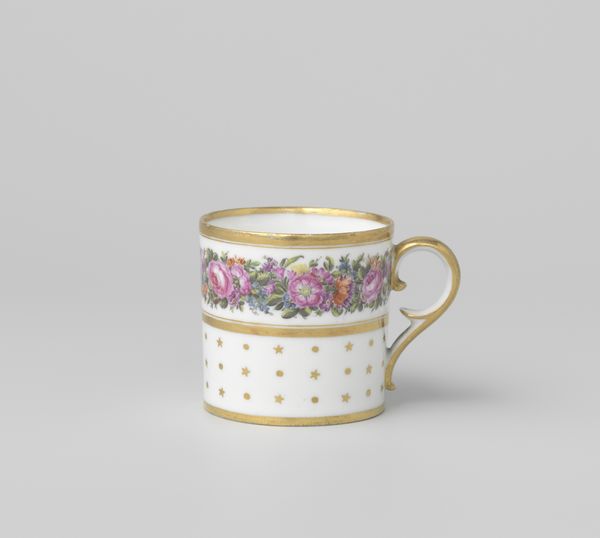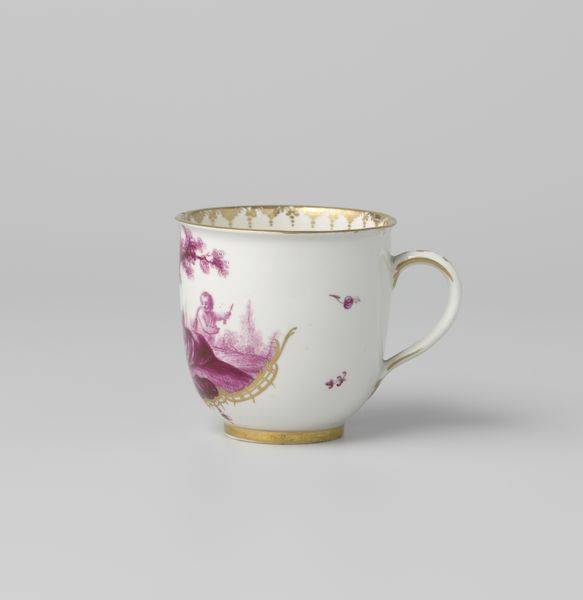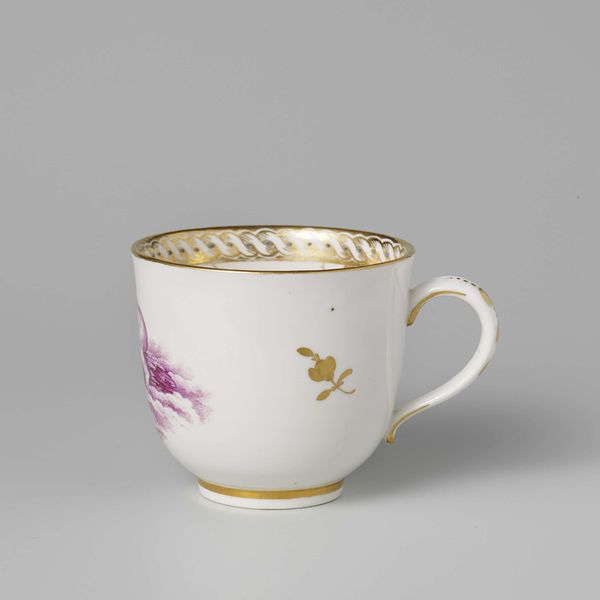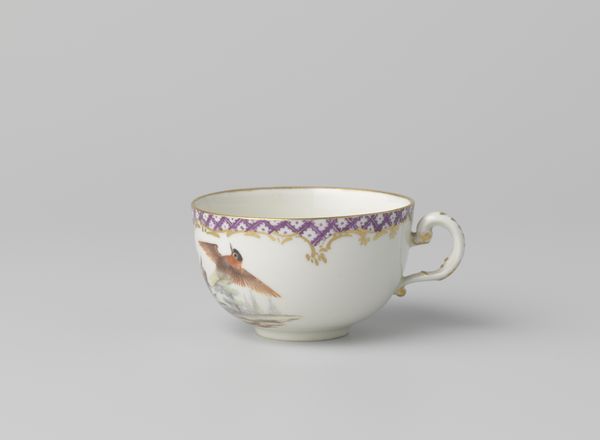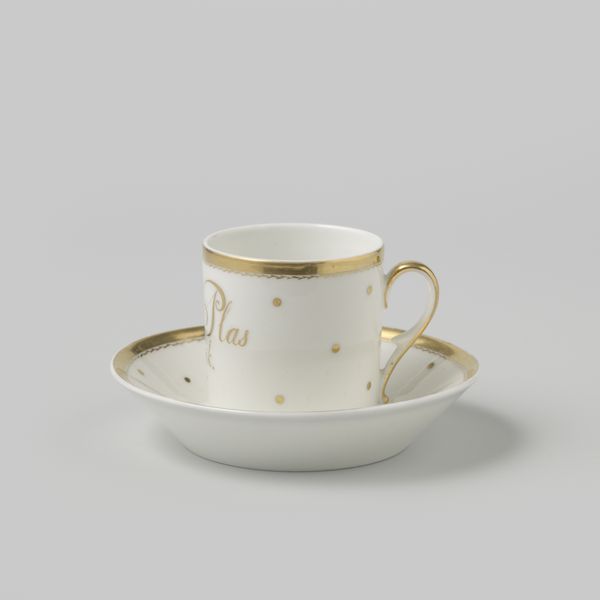
porcelain
#
porcelain
#
decorative-art
#
erotic-art
Dimensions: height 6.5 cm, diameter 6 cm, width 8.7 cm
Copyright: Rijks Museum: Open Domain
Curator: The eye is immediately drawn to the striking realism of the insects against the pure white porcelain. Editor: It has a kind of delicate aggression about it, doesn't it? This is a diminutive, gilded object that showcases the brute force of the natural world; a quiet power struggle enacted on a refined object. Curator: This is "Cup with insects, flower sprays and grapevines," crafted around 1797-1798 and currently held at the Rijksmuseum. It’s porcelain, decorated with meticulous detail in the manner of Rue Thiroux, Paris. Notice the interplay of flora and fauna. Insects weren't typically symbolic of beauty at that time, yet here they are, immortalized. Editor: I'm thinking about power, beauty standards, and also colonialism here. These scientific depictions reflect how the natural world was viewed, understood, and then categorized or commodified. Consider that scientific exploration often occurred hand in hand with colonial exploitation of land and resources. Curator: Precisely. The cup encapsulates a tension – the decorative and the scientific. The meticulous detail elevates the status of these small creatures. What does it mean when something as seemingly insignificant as an insect is given such prominence? It's about perceived value; at the time there was emerging interest in scientific observation, entomology specifically, so its representation carries cultural weight. Editor: I find the use of gold quite striking too, offering a stark contrast. Gold, historically used to highlight holy figures or valuable objects, now frames images of mundane insects. Curator: It adds another layer. Insects are also tricksters and transformative figures. To drink from this cup is to potentially embrace that shape-shifting quality. Or, more literally, one is reminded of life's cyclicality: growth, decay, transformation all contained in a sip. Editor: And to think about this in terms of status or display. Porcelain during that era indicated extreme wealth, so whoever commissioned or purchased this cup, might be trying to demonstrate a connection to learning, to scientific advancement. Maybe even some degree of enlightened awareness, or intellectual sophistication. Curator: Exactly. These symbols act as carriers of status and identity, providing us a small window into the historical consumer. Editor: In short, it's far more than a pretty cup! Curator: Indeed. A concentrated dose of cultural values.
Comments
No comments
Be the first to comment and join the conversation on the ultimate creative platform.

